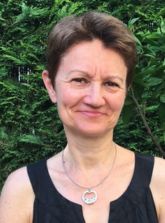
Year of Election
Division
Nationality
Country/Region of working/living
City
Institute
CV
2025
Chemistry Division
French
France
Paris
Institut Parisien de Chimie Moléculaire, CNRS
Anna Proust has been full professor of inorganic chemistry since 2000 at Université Pierre et Marie-Curie (UPMC-Paris 06-France) and then Sorbonne Université. She is a graduate of the Ecole Normale Supérieure and of the Université Pierre et Marie Curie. She received her Ph.D. degree in 1992 under the supervision of Professor Dr. P. Gouzerh. After a post-doctoral stay at the University of Bielefeld (Germany) with Professor Dr. A. Müller, she returned to UPMC as Assistant Professor, then Associate Professor. She was junior member of the Institut Universitaire de France (IUF, 2007-2011) and director of the doctoral school of molecular chemistry. She has been vice-chair then chair of the Coordination Chemistry Division of the French Chemical Society, deputy-director and then director of the Parisian Institute of Molecular Chemistry-IPCM. In 2020, she received the State Prize of the French Academy of Sciences.
Anna Proust is an expert in the chemistry of polyoxometalates (POMs). These nanometric molecular metal oxides are endowed with outstanding structural diversity and remarkable redox properties. Combining the properties of molecules with those of extended oxides, they can act as electronic mediators or electron reservoirs. Anna Proust’s research focuses on organometallic oxides, transition metal-substituted POMs, in relation to molecular magnetism or catalysis, and on the covalent functionalization and post-functionalization of POMs for their applications in molecular electronics and solar energy conversion.
Having spent several years studying and functionalizing POMs (i.e. forming organic-inorganic hybrids by introducing nitrogen, silyl, phosphonyl, or stannyl groups), Anna Proust has recently turned her attention to their use as modular building blocks for developing functional molecular materials. She aims to use them as charge storage nodes, for example in devices for molecular electronics, or as electronic relays in photo- or electro-assisted reduction processes involving small molecules such as H⁺, CO₂, and O₂. A common theme in all these studies is the understanding of the parameters that govern electron transfer/transport and the shaping of POMs, such as their organization on electrodes, given that POMs are charged, non-sublimable molecules.
